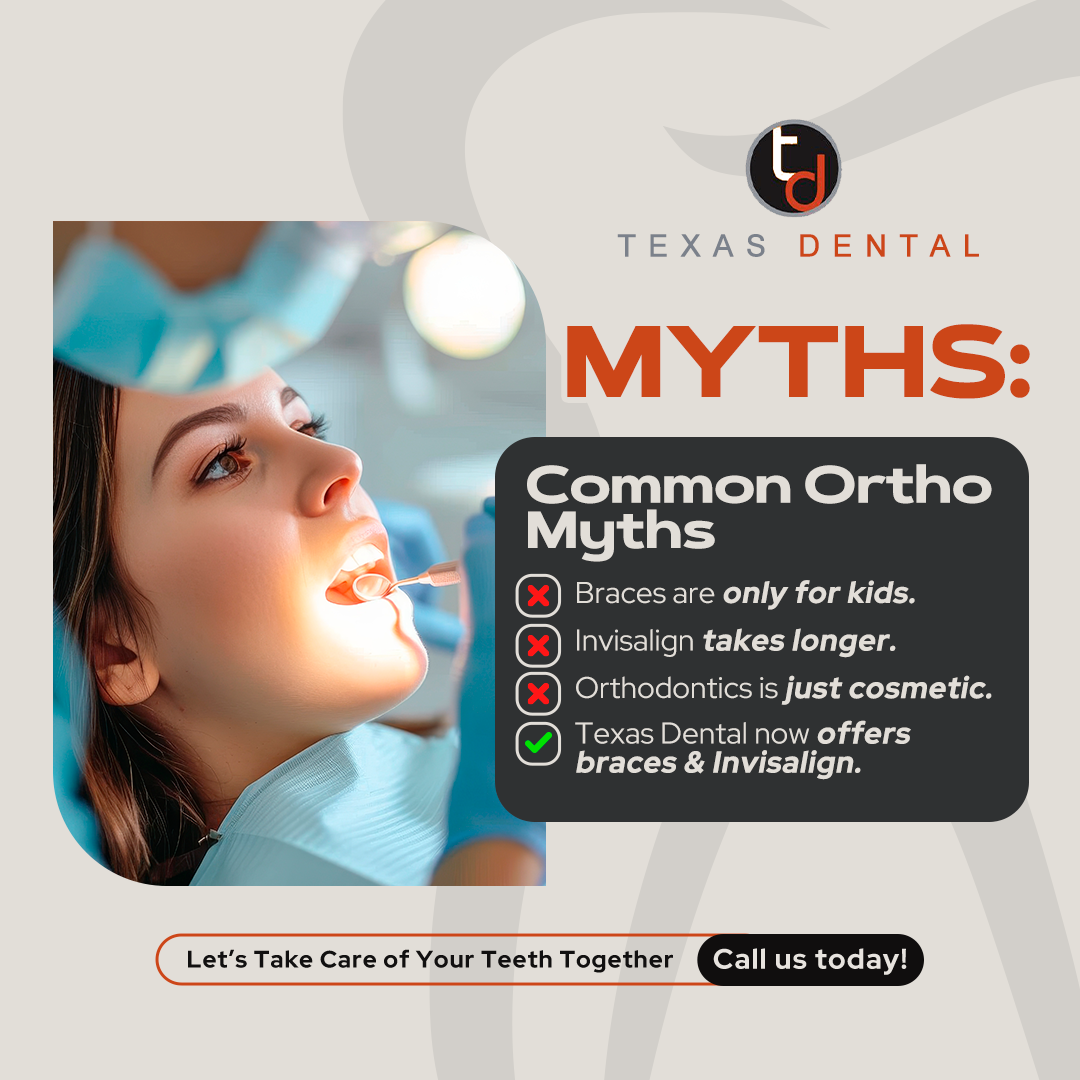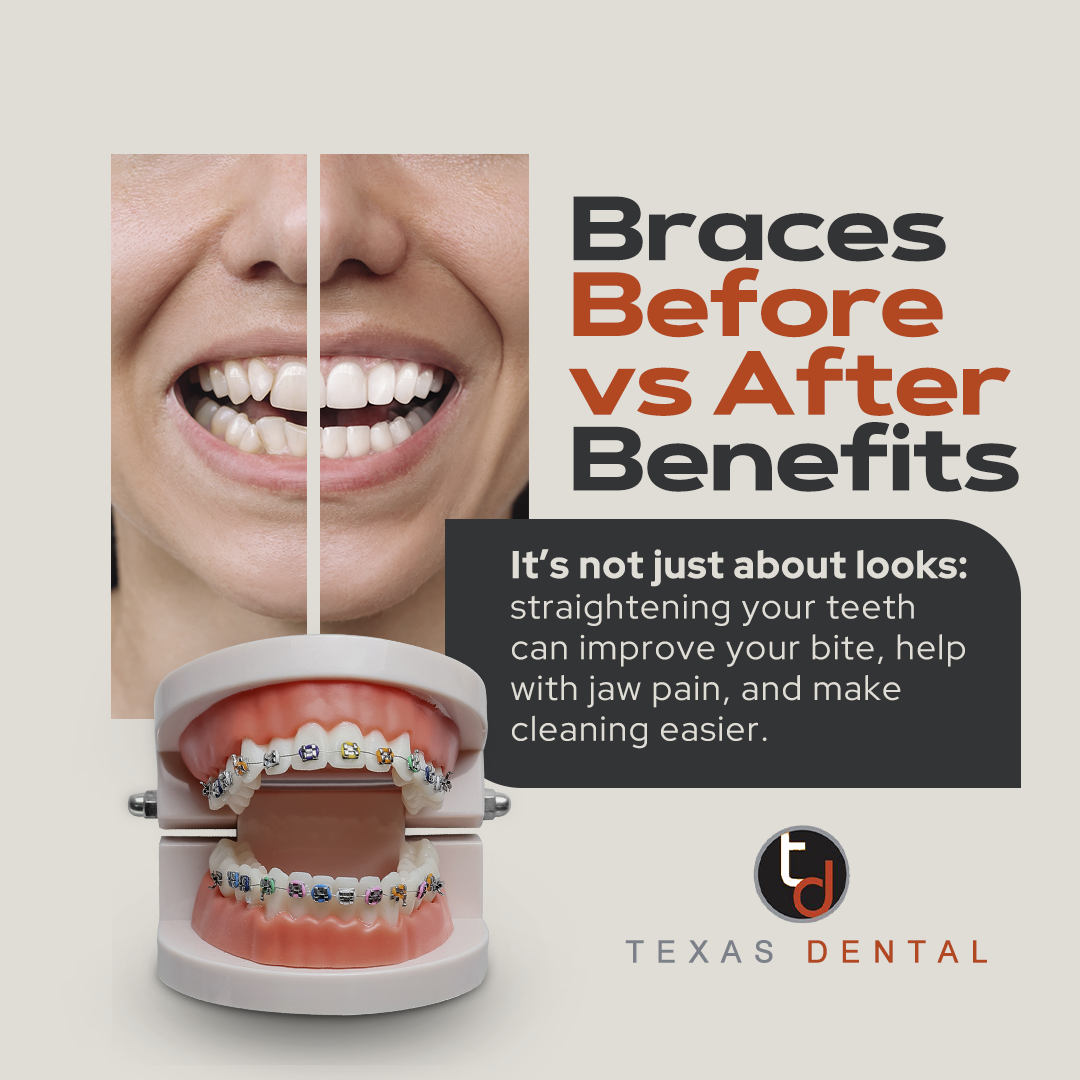
Orthodontics is a specialized branch of dentistry that focuses on correcting misaligned teeth and jaws. At Texas Dental, we provide comprehensive orthodontic treatments to help you achieve a healthier, straighter smile.
How Orthodontic Treatment Works
Orthodontic treatment uses appliances like braces, clear aligners, or retainers to apply gentle, continuous pressure to your teeth over time. This force gradually moves the teeth and jaw into the correct position. The process is designed to improve both the function and appearance of your smile, making it easier to clean your teeth and reducing the risk of future dental issues.
What’s the duration of the Treatment
The duration of orthodontic treatment varies greatly depending on the individual case. Factors such as the severity of the misalignment, the type of appliance used (e.g., traditional braces vs. clear aligners), and patient compliance with the treatment plan all play a role. While some minor corrections may only take a few months, more complex cases can require treatment for two years or more. We’ll provide you with a personalized treatment timeline during your initial consultation.
Why Should You Consider Orthodontic Treatment?
Orthodontic treatment offers more than just a beautiful smile. A properly aligned bite can prevent a variety of dental health problems. Correcting misaligned teeth can:
- Improve oral hygiene: Straighter teeth are easier to brush and floss, reducing the risk of cavities and gum disease.
- Reduce jaw pain: A misaligned bite can cause stress on the jaw joint, leading to headaches and pain.
- Prevent abnormal wear of teeth: When teeth don’t fit together properly, they can wear down unevenly, which may lead to chipping or other damage.
- Boost self-confidence: A confident smile can have a positive impact on your personal and professional life.
Orthodontics For All Ages
Orthodontics isn’t just for kids and teens. More adults than ever are choosing to straighten their teeth for a healthier, more confident smile.
Orthodontics for Children
The American Association of Orthodontists recommends that children have their first orthodontic screening by age seven. Early intervention can address potential problems before they become severe, sometimes simplifying or even eliminating the need for more extensive treatment later.
Orthodontics for Teens
This is the most common time for orthodontic treatment. Most permanent teeth have erupted by this age, making it an ideal time to correct crowding, spacing, and bite issues with traditional braces or clear aligners.
Orthodontics for Adults
It’s never too late to achieve a straight, healthy smile. Adult orthodontic treatment can correct issues that were never addressed in childhood, as well as problems that have developed over time. With modern, discreet options like clear aligners, adult treatment is more convenient than ever.

FAQ
How long will I have to wear braces?
The length of time you’ll wear braces depends on the complexity of your case. On average, treatment lasts between 18 and 24 months, but some cases can be shorter or longer. After your initial consultation, we can give you a more precise estimate.
What’s the difference between orthodontics for adults vs teens?
While the basic principles are the same, adult orthodontics can be more complex because adult jawbones are no longer growing. This means that treatment may take slightly longer. Additionally, adults are more likely to have existing dental work like crowns or fillings that must be taken into account.
Will getting braces hurt?
You may experience some soreness for a few days after your braces are first placed or adjusted. This is normal and can usually be managed with over-the-counter pain relievers. The discomfort is temporary and is a sign that your teeth are moving into their new position.
What is the ideal age for a child to see an orthodontist?
The recommended age for a child’s first orthodontic evaluation is by age seven. At this stage, we can identify any early signs of jaw growth problems or developing bite issues. Early intervention can help prevent more serious problems down the road.
